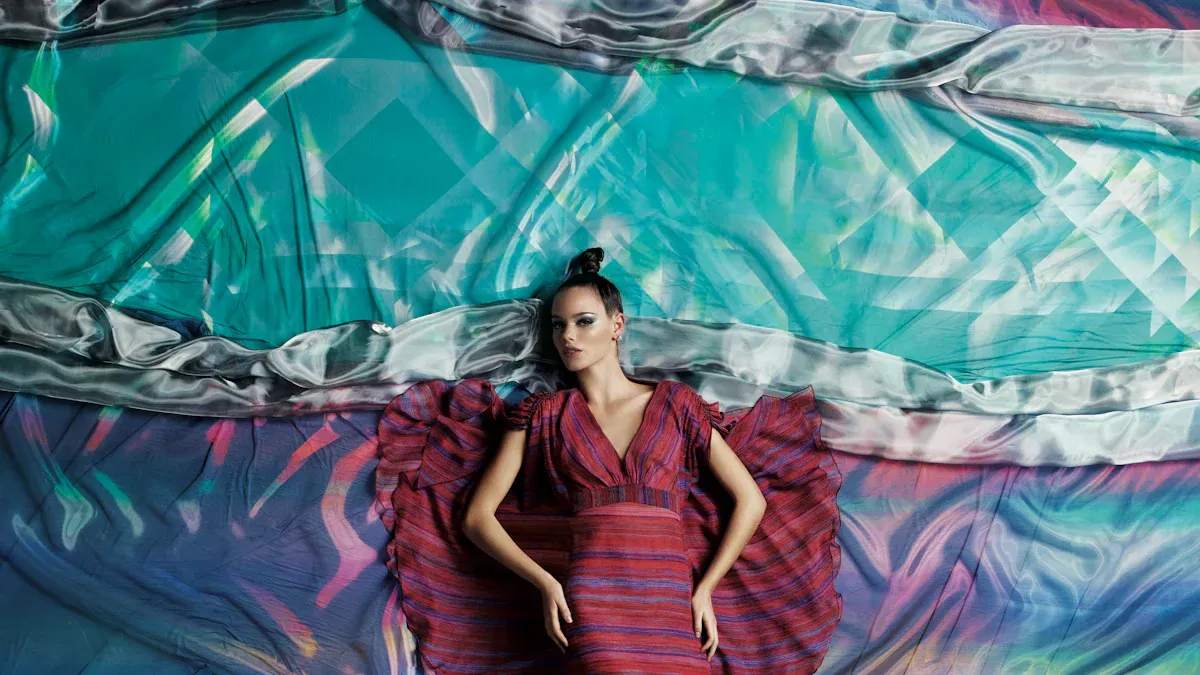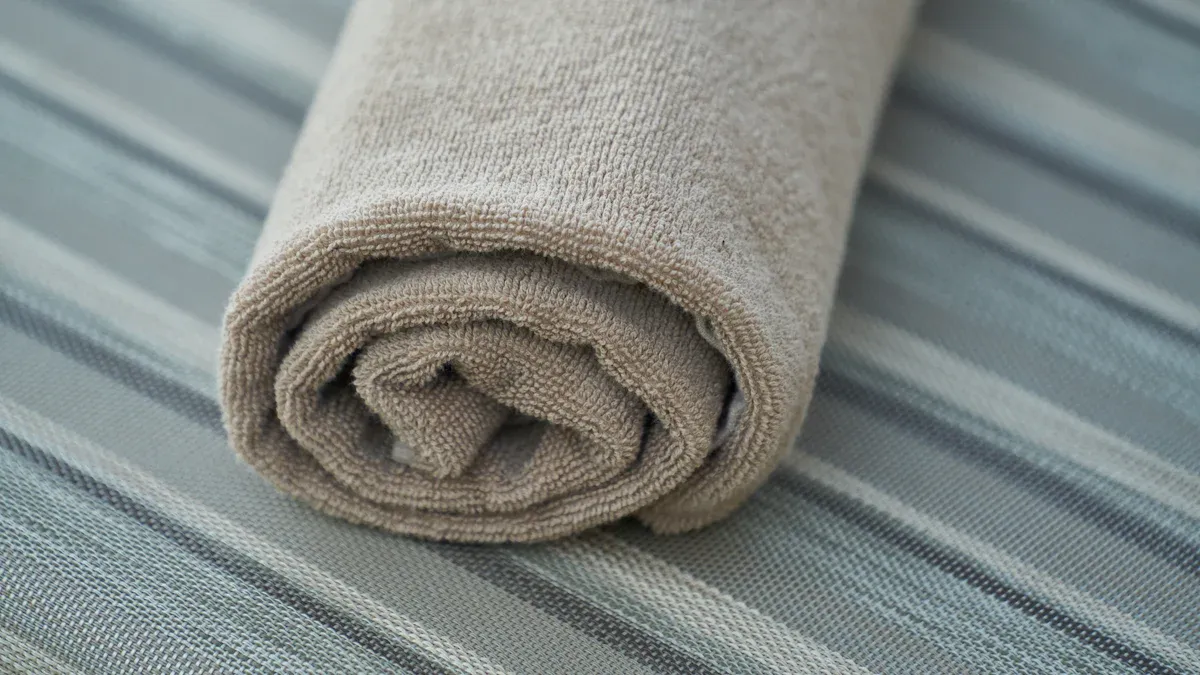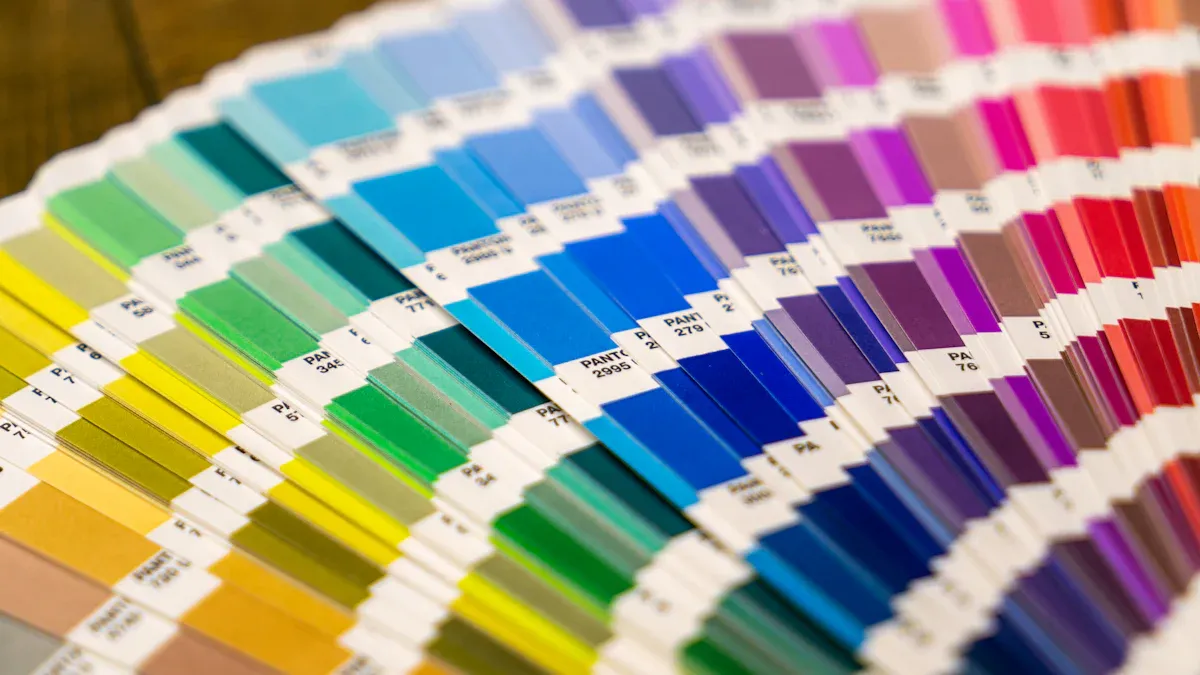
Sublimation printing fabric elevates your custom apparel into a showcase of vivid, enduring designs. This cutting-edge method enables flawless, all-over prints on polyester-based fabrics, making it an ideal option for personalized clothing such as jerseys and t-shirts. The durability of sublimation printing fabric ensures your designs remain resistant to cracking, peeling, or fading, even after numerous washes. Moreover, advancements in sublimation technology now provide quicker processing times and eco-friendly ink alternatives, catering to environmentally conscious buyers. As the demand for customized products continues to rise, sublimation printing fabric delivers a cost-effective solution that perfectly blends quality with affordability.
Key Takeaways
- Sublimation printing makes bright designs by putting ink into polyester fabric. Colors stay bold even after many washes.
- This method is strong and stops cracking, peeling, or fading. It works great for custom clothes like jerseys and t-shirts.
- Sublimation works well on polyester and blends, giving many choices for different clothing styles.
- Picking sublimation helps the environment because it uses less water and fewer chemicals than older printing ways.
- Sublimation printing saves money for small or big orders. It is fast and lowers setup costs.
Understanding Sublimation Printing Fabric
How Sublimation Printing Works
Sublimation printing transforms your designs into vibrant, long-lasting prints through a precise process. It begins with creating or selecting graphics using RIP software, where you combine them into a master layout file. This file is sent to a specialized printer that applies sublimation ink onto transfer paper. Once the transfer paper is ready, it is positioned against the fabric and fed into a heat press or roller.
The magic happens when the ink is rapidly heated. This causes it to evaporate and penetrate the fabric’s pores, which open under the heat. As the heat is removed, the pores close, permanently embedding the ink into the material. This process ensures that the design becomes part of the fabric itself, resulting in prints that resist fading, cracking, or peeling. Sublimation printing fabric delivers unmatched quality and durability, making it ideal for custom apparel.
Why Sublimation Printing Is Unique for Custom Apparel
Sublimation stands out among printing methods due to its ability to produce professional-grade results. The ink becomes a permanent part of the fabric, ensuring your designs remain vibrant and smooth even after multiple washes. Unlike vinyl transfers, sublimation avoids the stiff texture, offering soft and breathable prints that enhance comfort.
This method excels in creating vivid colors without requiring multiple layers, unlike vinyl printing. It also surpasses DTG printing by delivering brighter and more durable results. Sublimation printing fabric is perfect for custom apparel, especially when you need all-over prints that maintain their quality over time. Whether you’re designing jerseys, t-shirts, or other polyester-based garments, sublimation ensures your creations look premium and last longer.
Key Benefits of Sublimation Printing for Custom Apparel
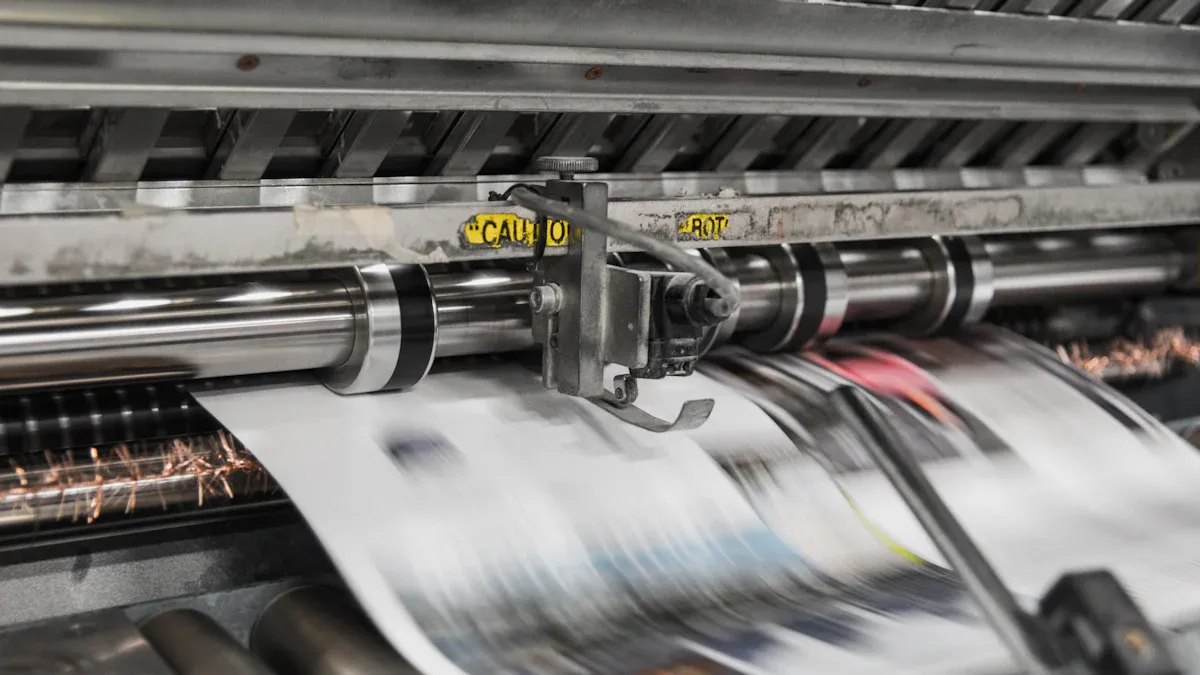
Vibrant and Long-Lasting Colors
Sublimation printing delivers unmatched vibrancy and color depth, making your designs stand out. The dye-sublimation process embeds ink directly into the fabric fibers, creating high-resolution graphics that maintain their brilliance over time. Unlike traditional methods, sublimation ensures that colors remain vivid even after repeated washes. This makes it an ideal choice for custom shirt printing and other personalized apparel.
Several studies highlight the superior color performance of sublimation printing. For instance:
- Research shows that advancements in ink technology have enhanced the cohesion between ink and fabric, resulting in improved color gamuts and overall print quality.
- Instrumental color quality control in the textile industry has refined color tolerance limits, ensuring consistent and vibrant results.
- Studies also emphasize the role of fabric structure and dye type in achieving optimal color outcomes, showcasing the precision of sublimation printing.
By choosing sublimation printing services, you ensure your custom apparel features vibrant, long-lasting colors that leave a lasting impression.
Durability: Designs That Resist Cracking, Peeling, and Fading
Durability is one of the most significant sublimation printing benefits. Unlike surface-level printing methods, sublimation embeds the design into the fabric itself. This ensures that your apparel remains free from cracking, peeling, or fading, even after extensive use. Whether you’re creating custom jerseys for sports teams or personalized t-shirts for events, sublimation guarantees that your designs withstand the test of time.
The dye-sublimation process creates a bond between the ink and the fabric’s synthetic fibers. This molecular-level integration ensures that the design becomes a permanent part of the material. As a result, your apparel retains its quality and appearance, even after numerous washes or exposure to sunlight. Sublimation printing fabric offers a reliable solution for those seeking durable and high-quality custom apparel.
Versatility: Ideal for Polyester and Blended Fabrics
Sublimation excels in versatility, making it suitable for a wide range of fabric types. While it works best on polyester and polyester-blend fabrics, advancements in technology have expanded its applications. This flexibility allows you to explore various customization options for your apparel.
Research confirms the adaptability of sublimation printing:
- The market for dye sublimation printing has grown due to its compatibility with materials like ceramics, metals, and treated natural fibers.
- Pretreating fabrics with polyvinyl alcohol enhances the printability and color performance of cotton and polyester blends.
- Single-pass printers can handle diverse fabrics, including silk, polyester, and blends, showcasing the broad applicability of sublimation printing.
For custom apparel, polyester remains the top choice due to its ability to bond effectively with sublimation inks. This ensures vibrant, durable, and eco-friendly printing methods that cater to your unique design needs. Whether you’re creating high-resolution graphics for sportswear or casual wear, sublimation offers unparalleled versatility.
Eco-Friendly and Sustainable Printing Process
Sustainability has become a critical factor in the apparel industry, and sublimation stands out as an eco-friendly printing method. Unlike traditional techniques, sublimation minimizes environmental impact by reducing water and chemical usage. This makes it an excellent choice for businesses and individuals seeking greener solutions for custom apparel.
One of the most significant advantages of sublimation printing fabric lies in its efficient use of resources. Traditional methods often require large amounts of water for dyeing and rinsing, leading to substantial wastewater generation. Sublimation, on the other hand, uses heat to transfer designs directly onto the fabric, eliminating the need for water-intensive processes. This not only conserves water but also reduces the strain on wastewater treatment systems.
The table below highlights the eco-friendly benefits of sublimation compared to traditional methods:
| Aspect | Sublimation Printing | Traditional Methods |
|---|---|---|
| Water Usage | Uses less water | High water consumption |
| Chemicals | Fewer harsh chemicals involved | Often involves toxic chemicals |
In addition to conserving water, sublimation avoids the use of harsh chemicals commonly found in traditional printing. Many conventional methods rely on toxic dyes and solvents that can harm the environment and pose health risks to workers. Sublimation uses specialized inks that bond with polyester fibers without releasing harmful substances. This ensures a safer and cleaner production process.
By choosing sublimation, you contribute to a more sustainable future. The process not only reduces resource consumption but also aligns with the growing demand for environmentally responsible practices. Whether you’re creating custom sportswear or promotional apparel, sublimation offers a way to achieve vibrant, durable designs while minimizing your ecological footprint.
Sublimation Printing vs. Traditional Methods
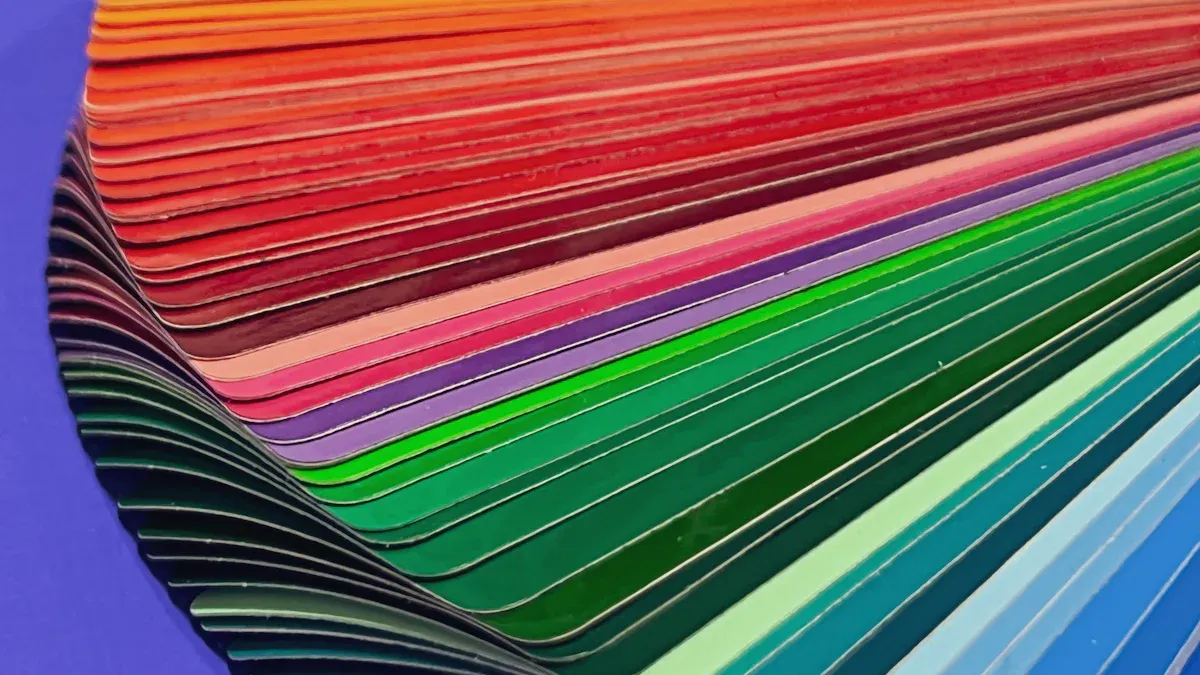
Advantages Over Screen Printing
Sublimation printing offers several advantages over screen printing, making it a preferred choice for custom apparel. Screen printing requires stencils for each color, which increases production time and setup costs. Sublimation eliminates this step by directly transferring designs onto the fabric, speeding up the process and reducing expenses.
Durability is another key difference. Screen printing applies ink to the surface of the fabric, which can crack or peel over time. Sublimation integrates the ink into the fabric fibers, ensuring long-lasting designs that resist wear and tear. This makes sublimation ideal for apparel that undergoes frequent washing or heavy use.
The table below highlights the differences between these methods:
| Feature | Sublimation Printing | Screen Printing |
|---|---|---|
| Durability | Embedded ink, resistant to fading | Surface-level ink, prone to cracking |
| Production Time | Faster due to direct transfer | Slower due to stencil creation |
| Design Complexity | Handles intricate designs | Better for simple patterns |
| Setup Costs | Lower initial costs | Higher due to stencil requirements |
Sublimation printing fabric ensures vibrant, durable designs with quicker turnaround times, making it a superior choice for custom apparel.
Benefits Compared to Heat Transfer Vinyl (HTV)
Heat Transfer Vinyl (HTV) involves cutting and pressing vinyl onto fabric, which limits design flexibility and creates a textured finish. Sublimation, on the other hand, produces smooth, breathable prints that feel like part of the fabric. This enhances comfort and gives apparel a professional look.
HTV is better suited for small, simple designs, while sublimation excels in creating intricate, full-color graphics. Sublimation also outperforms HTV in durability. Vinyl designs can peel or fade over time, whereas sublimation prints remain vibrant and intact.
The table below compares these methods:
| Metric | HTV Benefits | Sublimation Printing Benefits |
|---|---|---|
| Durability | Prone to peeling and fading | Long-lasting, fade-resistant |
| Comfort | Textured finish | Smooth, breathable prints |
| Design Flexibility | Limited to simple designs | Ideal for intricate graphics |
| Production Time | Slower due to vinyl cutting | Faster with direct transfer |
Sublimation printing delivers superior results for custom apparel, especially when you need high-quality, durable designs.
Why Sublimation Is Perfect for All-Over Printing
Sublimation stands out as the best method for all-over printing. It allows you to create seamless, edge-to-edge designs that cover the entire garment. This capability is ideal for patterns, gradients, and vibrant graphics that require full coverage.
Unlike other methods, sublimation integrates the design into the fabric, ensuring it remains smooth and fade-proof. The process works best on light-colored polyester fabrics, making it perfect for sportswear, promotional apparel, and custom t-shirts.
The table below outlines why sublimation excels in all-over printing:
| Feature | Description |
|---|---|
| Fabrics | Best for light-colored polyester |
| Designs | Seam-to-seam printing with vibrant colors |
| Durability | Long-lasting, fade-proof prints |
| Comfort | Soft, texture-free finish |
| Limitations | Not suitable for cotton or dark fabrics |
Sublimation printing fabric ensures your all-over designs look professional and last longer, making it the go-to choice for custom apparel.
Cost-Effectiveness of Sublimation Printing Fabric
Initial Investment vs. Long-Term Savings
Sublimation printing offers a unique balance between upfront costs and long-term savings. While the initial investment in sublimation equipment may seem higher compared to traditional methods, the benefits quickly outweigh the costs. This process eliminates the need for expensive stencils or screens, reducing setup expenses significantly. Once the equipment is in place, you can produce high-quality prints with minimal waste, making it an efficient choice for businesses of all sizes.
- Initial setup costs for dye sublimation printing are higher, but it leads to reduced per-unit costs at scale due to faster production and minimal waste.
- The major application segments of dye sublimation printing include apparel, which indicates its relevance in the custom apparel market.
By choosing sublimation, you gain access to a cost-effective solution that delivers vibrant, durable designs. Over time, the savings on materials and labor make this method a smart investment for creating custom apparel.
Why Sublimation Printing Is Suitable for Small and Large Orders
Sublimation printing stands out for its versatility, accommodating both small and large orders with ease. Whether you need a single custom t-shirt or thousands of jerseys for a sports team, this method ensures consistent quality and quick turnaround times. The process involves just two steps—printing and heat fixing—eliminating the need for pre-treatment or post-print washing. This simplicity enhances efficiency and reduces production time.
| Key Advantage | Description |
|---|---|
| Market Dominance | Dye-sublimation accounts for nearly 50% of digital textile prints, indicating its widespread use. |
| Growth Rate | The market is projected to grow from USD $8.1 billion in 2019 to USD $14.2 billion by 2025. |
| Ease of Production | Simplifies the printing process with just two steps: print and heat fix, eliminating pre-treatment. |
| Speed of Production | Quick turnaround with no delays for coating or post-print washing, enhancing efficiency. |
| Environmental Benefits | The process is environmentally secure, saving energy and water compared to traditional methods. |
This adaptability makes sublimation printing cost-effective for bulk orders while remaining practical for smaller quantities. You can scale your production without compromising on quality, making it an ideal choice for businesses seeking flexibility in their custom apparel solutions.
Suerte’s Cost-Effective Custom Apparel Solutions
Suerte Textile takes the cost-effectiveness of sublimation printing to the next level. With a comprehensive production infrastructure and advanced fabric processing techniques, Suerte ensures high-quality results at competitive prices. Whether you’re working with polyester knit, rayon blends, or other fabric types, Suerte provides tailored solutions to meet your needs.
Our one-stop service covers every aspect of the process, from pattern design to production optimization. This streamlined approach minimizes costs and accelerates delivery times, helping you seize market opportunities. For cost-sensitive customers, Suerte offers low-cost fabric process solutions that achieve equivalent visual effects without compromising quality.
By partnering with Suerte, you gain access to a reliable provider of custom apparel solutions. Our expertise in sublimation printing ensures vibrant, breathable designs that stand the test of time. Whether you’re producing small batches or large-scale orders, Suerte delivers cost-effective results that align with your goals.
Practical Tips for Sublimation Printing Success
Choosing the Best Fabrics for Sublimation
Selecting the right fabric is crucial for achieving vibrant and durable sublimation prints. Polyester and polyester-blend fabrics with at least 65% polyester content work best. These materials allow the sublimation ink to bond effectively, ensuring high-resolution graphics and long-lasting results. For enhanced color vibrancy, consider using a pre-treatment spray, which can boost color intensity by up to 30%.
Testing small fabric swatches before starting full-scale production is essential. This step helps you evaluate color accuracy and print quality, reducing the risk of errors. In fact, 78% of successful sublimation businesses attribute their success to rigorous testing and sampling procedures. While pure polyester fabrics are preferred by over 80% of sublimation enthusiasts, experimenting with blends can also yield excellent results for specific customization needs.
Essential Equipment and Tools for Sublimation Printing
Investing in the right equipment ensures consistent and professional results. Below is a comparison of popular sublimation printers to help you make an informed decision:
| Printer Model | Key Features | Pros | Cons |
|---|---|---|---|
| Epson EcoTank 2760 | 100-sheet capacity, Wi-Fi connectivity | High page yields, low cost per print | Slow printing speed |
| Epson SureColor F170 | PrecisionCore Technology, 1200 x 600 dpi | High-quality print contrasts and colors | Tedious installation |
| Sawgrass SG500 | CreativeStudio apps, 2-year warranty | Exceptional color accuracy | Not as portable |
| Liene Photo Printer | Portable, Wi-Fi connectivity | Ships with 20 photo papers | Limited for repetitive tasks |
The Sawgrass SG500 and Epson SureColor F170 stand out for their exceptional color accuracy and ability to handle larger print sizes. When choosing a printer, prioritize specifications like DPI (dots per inch), printing-field size, and speed. A higher DPI ensures sharper and more detailed prints, which is critical for sublimation printing.
Tips for Achieving High-Quality Results
To achieve professional-grade sublimation prints, follow these practical tips:
- Prepare Your Fabric: Ensure the fabric is clean and wrinkle-free before printing. This prevents imperfections in the final design.
- Optimize Your Design: Use high-resolution graphics to maintain clarity and detail. Low-quality images can result in blurry or pixelated prints.
- Calibrate Your Equipment: Regularly check and adjust your printer settings for optimal color accuracy. This step ensures consistent results across multiple prints.
- Control Heat and Pressure: Set your heat press to the recommended temperature and pressure levels. Incorrect settings can lead to uneven prints or color distortion.
By adhering to these guidelines, you can produce sublimation prints that stand out for their quality and durability. Whether you’re working on small projects or large-scale orders, these practices will help you achieve a high degree of customization and customer satisfaction.
Sublimation printing fabric offers unmatched benefits for custom apparel. It produces vibrant, permanent designs that effectively capture complex color blends and photographic details. Unlike traditional methods, it ensures durability and resists stretching or blurring, making it ideal for high-quality, long-lasting apparel.
Whether you are a business owner, designer, or individual, sublimation stands out as the superior choice for creating custom clothing. With Suerte’s expertise and one-stop service, you can transform your ideas into professional-grade apparel that meets your needs effortlessly.
FAQ
What fabrics work best for sublimation printing?
Polyester and polyester blends with at least 65% polyester content yield the best results. These fabrics allow the sublimation ink to bond effectively, ensuring vibrant and durable prints. Avoid cotton or dark fabrics, as they do not support the sublimation process.
Can sublimation printing be used on dark fabrics?
No, sublimation printing works best on light-colored fabrics. The process relies on the fabric’s base color to enhance the vibrancy of the design. For dark fabrics, alternative printing methods like screen printing or heat transfer vinyl may be more suitable.
Is sublimation printing eco-friendly?
Yes, sublimation printing is an environmentally friendly option. It uses less water and fewer chemicals compared to traditional methods. The process eliminates wastewater and reduces the need for harsh dyes, making it a sustainable choice for custom apparel production.
How long do sublimation prints last?
Sublimation prints are highly durable. The ink becomes part of the fabric, ensuring designs resist cracking, peeling, and fading. Even after frequent washing or exposure to sunlight, sublimation prints maintain their quality and vibrancy for years.
What equipment is essential for sublimation printing?
You need a sublimation printer, heat press, sublimation ink, and transfer paper. High-quality equipment ensures professional results. For beginners, models like the Sawgrass SG500 or Epson SureColor F170 are excellent choices due to their precision and reliability.

